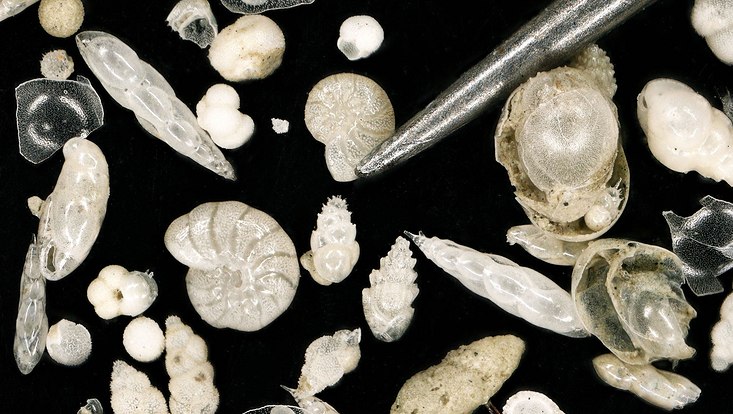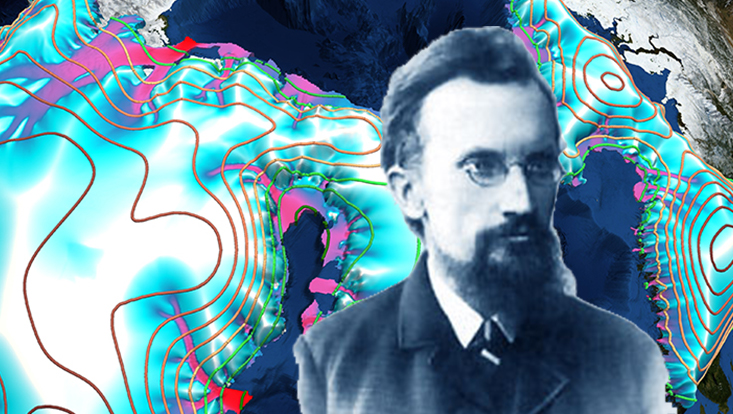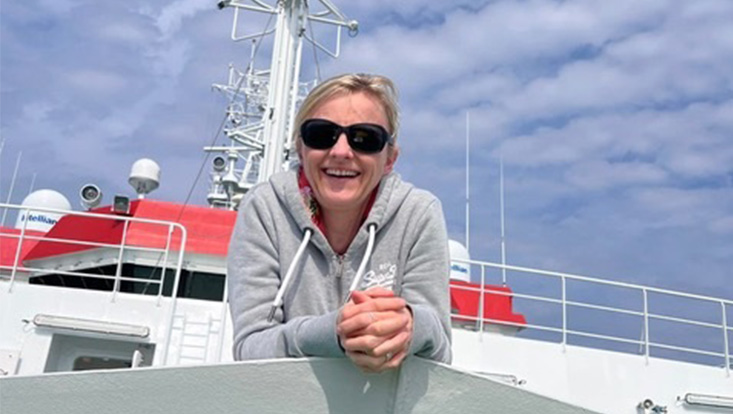Research at the Ocean FloorClimate change reaches into the deep sea
23 January 2024, by Prof. Dr. Gerhard Schmiedl

Photo: Gerhard Schmiedl
Sediment cores are like taking a look into the past. They allow us scientists to explore what was happening on Earth millions of years ago. Thanks to samples gathered in the ocean, we can draw conclusions as to what type of climate our planet had, and when. Plus: We can see the effects it had on the deep sea. In our work, we especially rely on single-celled organisms, which have left something valuable behind for the scientific community: their calcium carbonate shells.
Between the squid, sea cucumbers and worms, these organisms, which are so important for me as a researcher, can’t even be seen with the naked eye – the benthic foraminifera are only the size of grains of sand.
At Universität Hamburg’s Center for Earth System Research and Sustainability (CEN), my team and I are investigating how the deep sea responds to climate change and environmental change. And the benthic foraminifera are helping us do so. Some species form shells, similar to a snail’s shell, of calcium carbonate. When the single-celled organisms die, these shells are left behind.
Journey into the past
In order to answer the question as to whether climate change affects the deep sea, we use sediment cores. We travel to suitable sites by ship and lower a weighted steel pipe into the water. This presses into the still-soft deposits and collects a several-meter-long sediment sample. We then cut up the core and identify and label the layers by age – for instance, by ice ages, interglacials, or other types of climate change.

Next, the samples are taken to laboratories at Universität Hamburg: There, we examine and analyze the benthic foraminifera under the microscope. This tells us how many lived at the site in question, and how many of each species. This also gives us insights into the oxygen content and available food in the respective time period, since these two factors affect foraminifera diversity.
Closely intertwined: the deep sea and climate
But how is the climate connected to what goes on at the ocean floor? The water is home to a variety of plankton species, which have adapted to the water temperature in the near-surface layers of the ocean. When climate change makes those layers warmer, their habitats shift in response. Further, plankton is a key food source for organisms living at the seafloor, to which it sinks down. More food and at least a moderate oxygen content thus ensure more life on the seabed.
For our study, we compared more than thirty sediment cores from different oceans – this also includes data from the cluster of excellence CLICCS. Our samples showed: Deep-sea ecosystems are closely tied to climatic changes – and that includes anthropogenic climate change. Species-poor ecosystems are sensitive to climate change. Species-rich ecosystems, on the other hand, react more stably - i.e. the systems with food and oxygen.
What’s more, our data clearly shows that the seafloor shouldn’t be trawled for natural resources: Because deep-sea faunas are highly adapted to local conditions, it may take several thousand years before disrupted ecosystems are recolonized. That means, if human beings can refrain from interfering more with the deep-sea ecosystem, the prospects are good for the squid, sea cucumbers and benthic foraminifera at the ocean floor.
More information
Prof. Dr. Gerhard Schmiedl is a geologist and conducts research at the Center for Earth System Research and Sustainability (CEN) on how biodiversity in the deep sea responds to climate change. He is also active in the Cluster of Excellence CLICCS.
Guest piece: This article was originally published in the Hamburger Abendblatt as part of our monthly series on climate research. All articles in the series


